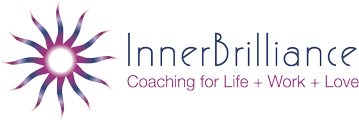Would you like more love in your life?
Often times we may want to feel more love and support in our lives. Knowing we can’t control others or have people behave a certain way, I like to consider how can I show up differently to experience more of what I desire. The first step is insuring I’m feeling emotionally balanced and open. From that place, I can see solutions more clearly. So, how can we begin to feel this way?
My two suggestions are to practice gratitude and experience emotional agility. These practices can fortify your emotional well-being by transforming your energy and reinforcing positive expectations. Check out my recent articles about the most effective way to Practice Gratitude with a Twist and 3 Approaches to Improve Your Emotional Agility.
Being immersed in gratitude and emotionally balanced will increase opportunities for feeling more love. Why does this even matter? Beyond romantic relationships or relationships with family and friends, experiencing love can also influence our health, career, and other areas of life. While we go through our busy days, we may underestimate how feeling love impacts every area of our lives. And, we might not even realize how we may be the ones getting in the way of experiencing the loving feelings we desire. So, below I share the power of love and two approaches that will help you experience more of it in your life for overall emotional well-being.
The Power of Love
Let’s begin by exploring the powerful impact of love and how it helps us to experience healthy emotional energy. An extreme example of the power of love is revealed in the research done by Dr. Sean Mackey from Stanford University Neuroscience and Pain Lab. In his study, subjects who endured pain stimuli felt 44 percent less pain when they focused on a loved one. In real-life scenarios, focusing on loving feelings can safeguard your good spirits and allow you to make life-affirming choices that better position you for experiencing what you desire in various areas of your life.
So it’s essential to come from a place of love to get the life results you want, especially if those results include experiencing more love. Unfortunately, the benefits of love diminish if either giving or receiving it is blocked. At its essence, love is defined as a feeling of warm personal attachment. Ask yourself, “How often do I feel that for myself or others?” With the stresses of life, it can be hard. Leo Buscaglia PhD, states in his book, Love: What Life Is All About, “You can only give to others what you have yourself.” If you want to experience more love, you need to love yourself first.
Receiving Love
Giving love is only half of the equation. To feel the true impact of love, we need to be open to receiving it as well as giving it. The action of “receiving” is the other half of the cycle of “giving.” So if you resist receiving love, you’re actually stopping the natural flow of “giving and receiving” (no matter how much you give). Additionally, receiving love from another allows you to connect with that person. Research actually shows that when you receive love, levels of serotonin—a neurotransmitter of happiness—increase just as much as when you give. So when someone offers you a gift, whether it’s a present, a compliment, or a helping hand, just receive it, say thank you, and feel appreciation in your heart.
An important step toward self-love is eliminating old resentments and forgiving not only others, but also forgiving yourself. Holding on to grudges can block your ability to love. After you release yourself from any past pain and truly love yourself, you can move on to receiving love, and in turn, you’ll be able to give love more freely. With this healthier sense of emotional well-being, you’ll experience happier feelings and more motivation to put effort in to other areas of your life.
Experiencing Forgiveness
If you’re in a situation where you want to forgive, but you’re struggling to do so, try some of these exercises to express forgiveness for yourself (and others) and to ultimately experience love.
Forgive yourself:
- Repeat the following saying: “I’m sorry. Please forgive me. Thank you. I love you.” This ancient Hawaiian technique is based on the belief that taking responsibility for what happens to you allows you to bring in the essence of forgiveness into any situation.
Forgive others:
- Use the exercise from the book, Radical Forgiveness: A Revolutionary 5-Stage Process to Heal Relationships, Let Go of Anger and Blame, and Find Peace in Any Situation by Colin Tipping, which suggests writing three letters on three different days to someone who has hurt you. The first letter should convey all of your anger. The second letter can communicate your anger to a lesser degree and also include elements of compassion, understanding, and some level of forgiveness for the person who hurt you. For your third letter, try to reinterpret the situation, noticing where you might have learned something from the situation or where you might have had some involvement in the outcome.
None of these letters should be mailed. These letters aren’t meant to impact the person who hurt you. They are meant to shift your energy and ultimately lessen the drama in your relationship with this person. This decrease in tension can also transform the other person’s energy, ideally making more room for love.
With forgiveness creating more room for love, you’ll feel more open to love for yourself and ultimately for others. And, you can make choices to experience your life in a whole new way.
So, I hope you feel that these practices can support you and that you feel the importance of being open to giving AND receiving love while also forgiving yourself and others to experience more love in your life.







